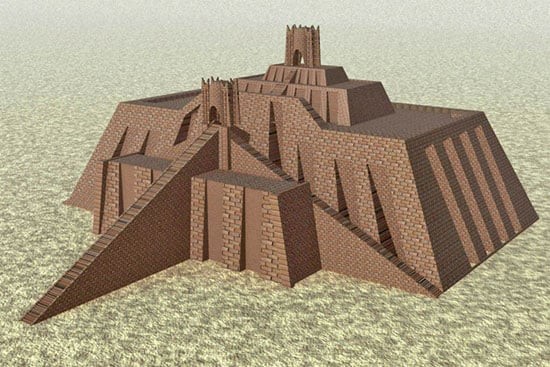
The ancient city of Ur stood as a pinnacle of Sumerian civilization in Mesopotamia during the 3rd millennium BC. Today, its most iconic remnant is the Great Ziggurat of Ur.
Situated in Iraq’s southern Dhi Qar Province, this vast step pyramid, which originally measured approximately 30m in height, 64m in length, and 46m in width, now exists largely in foundational ruins. The Ziggurat’s design featured progressively diminishing platforms built around a mud-brick core and shielded by an outer layer of burnt brick to protect against weathering.
King Ur-Nammu of the Third Dynasty of Ur initiated the ziggurat’s construction in the 21st century BC, and it was later completed by his son, King Shulgi. The structure was embedded in Ur’s temple complex, the city-state’s administrative core.
Dedicated to Nanna, the moon god and Ur’s guardian deity, the ziggurat symbolized the abode of the gods. Mesopotamians believed that their gods resided in the eastern mountains, and thus the ziggurat embodied such a divine dwelling on earth. Accordingly, a small shrine, including a bedchamber for the god and a chosen maiden to accompany him, was established atop the ziggurat. Ancillary structures like kitchens to prepare divine meals and accommodations for the god’s mortal attendants were also incorporated.

Reconstruction of the Ziggurat of Ur. Source: Wikipedia
King Shulgi’s nearly half-century reign saw Ur reach its zenith. The city not only became the epicenter of a vast Mesopotamian empire but under King Shulgi’s innovative leadership, it underwent spiritual and cultural transformations. In a bid to consolidate the loyalty of diverse city-states under his rule, Shulgi introduced a new deity – himself. Moreover, he smartly employed arts as a tool of propaganda, commissioning works that extolled his various virtues.
However, post Shulgi’s demise, Ur’s splendor waned. His successors failed to maintain the empire’s cohesion, leading to Ur’s conquest by the Elamites. Subsequent foreign rulers took charge, but nature dealt the final blow. A shift in the Euphrates River’s course deprived Ur of its irrigation, prompting abandonment and plunging the city into obscurity.
Remarkably, the 19th century saw European expeditions in Mesopotamia reacquainting humanity with lost cities like Ur. Excavations unearthed the Great Ziggurat of Ur, leading to significant restoration efforts.
Read more about the Ziggurat of Ur.
Top image: Restored Great Ziggurat of Ur. Source:






